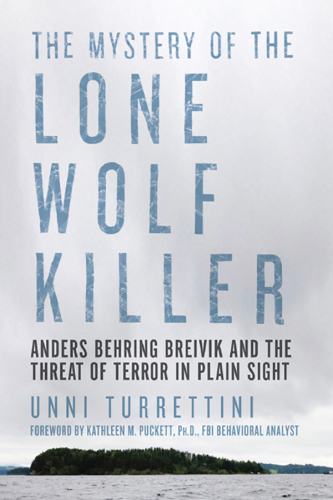
The Mystery of the Lone Wolf Killer
Anders Behring Breivik and the Threat of Terror in Plain Sight
کتاب های مرتبط
- اطلاعات
- نقد و بررسی
- دیدگاه کاربران
نقد و بررسی

August 31, 2015
Readers interested in learning how mass murderers who act alone can be stopped are likely to be disappointed by this unpersuasive book. Turrettini, a Norwegian expat residing in the U.S., starts with Anders Behring Breivik’s horrific 2011 crimes: he set off a powerful bomb outside the offices of the Norwegian prime minister in Oslo that killed eight people and then fatally shot 69 more at a nearby summer camp. Turrettini’s account of this massacre is riddled with generalizations. For example, she describes Norwegians as “sleepwalkers” who “don’t take care of one another.” The author is quick to dilute the narrative by frequently switching to discussions of the Unabomber (Ted Kacyzinski) and Oklahoma City bomber Timothy McVeigh. An entire chapter devoted to dismissing the value of gun control adds little to the book’s central argument, which is that such massacres are preventable. Turrettini further weakens the book with inconsistent claims (she cites the Virginia Tech massacre as a case where gun control might have made a difference) and spotty reasoning (she claims that the Virginia Tech shooter was technically not a “lone wolf” because he left a paper trail). The book’s most profound flaw is Turrettini’s argument that lone wolf killers can only be thwarted if members of their communities speak out about their unusual behavior before they strike. The very limited practical value of such an approach is glossed over.

October 15, 2015
Anders Behring Breivik, whose July 22, 2011 killing spree in Norway ended 77 lives, is characterized here as a "lone wolf killer," and compared and contrasted with past mass murderers, primarily Theodore Kaczynski and Timothy McVeigh. The thesis, that lone wolves can be identified only by sensitive observation by the communities within which they attempt to form connections, is believable and clearly stated. There is some awkward tension as the book straddles the line between academic case study and true crime thriller; the running comparisons to Kaczynski and McVeigh resemble the traditional essay format, while sojourns into Breivik's emotions and senses frame a dramatic story line. Occasional apparent contradictions (e.g., Breivik did not kill more people than McVeigh) are confusing, and justifications for not categorizing other mass murderers as lone wolves seem more forced than self-evident. The assertions that better tracking of mentally ill people will reduce the incidence of lone-wolf killings, and that tighter gun control will not stop them, will be unpopular with some readers. VERDICT Overall, this will appeal to readers interested in criminology, sociology, and psychology.--Ricardo Laskaris, York Univ. Lib., Toronto
Copyright 2015 Library Journal, LLC Used with permission.

























دیدگاه کاربران